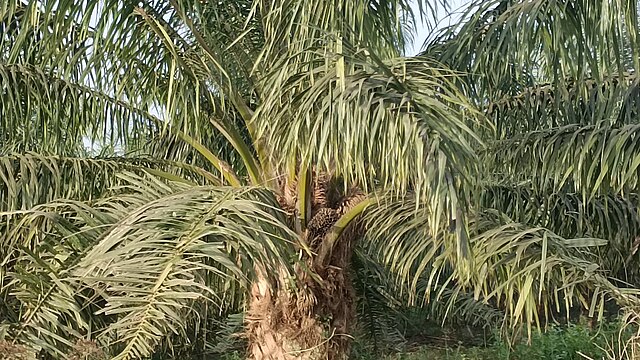Papua New Guinea is committing K3.5 million ($903,350) to various mills to procure oil palm seedlings and phase out ageing trees.
The oil palm (Elaeis guineensis) tree, not only echoes the Pacific island’s own name but remains the country’s main national export.
In 2022, the oil palm industry contributed K2.8 billion ($722.7 million) to the national GDP of K115.2 billion ($30.63 billion).
Ageing oil palms
Now, however, production has dropped due to the ageing of the trees, whose economic lifespan is 25 to 30 years. After this age, most trees become too tall to climb and farmers must cut them down and plant new ones.
Papua New Guinea’s intervention is through the supply of free seedlings to mills, which in turn disburse them to farmers.
In 2023, two major mills received K864,000 ($222,998) to purchase 72,000 seeds to cover their respective 600 hectares.
Oil palm seeds are expensive, hence the Oil Palm Ministry’s replanting fund known as the National Oil Palm Intervention Programme (NOPIP).
Papua New Guinea’s Prime Minister James Marape noted on March 11 that NOPIP will recover productivity by replacing ageing trees.
“Ageing of palm trees…(have contributed to)…declining production levels.” He stated.
Expensive Seeds
The scheme will also save palm oil farmers from the current seed expense of K18 ($4.65) per piece.
Smallholders comprise 35% of all growers for this key crop while large plantations account for 65%.
Because the government is only offering top grade seeds, the seemingly high per unit price is relevant.
Besides, there is a promise of profit in Papua New Guinea’s palm oil prices which influence the global equivalent. Global prices based on the Malaysian benchmark stood at MYR 4,200 per tonne ($896.28) or $0.9 per liter on March 13.
New Multinational
Outside the price factor, a major agribusiness multinational has entered the oil palm sector with a promise to improve productivity.
Wilmar International Ltd got a nod this March from the Oil Palm Ministry to join the industry. The company has already invested K300 million ($77.4 million) in local grains but wants to venture into the vegetable oil business.
Alongside crushing oilseeds for farmers across many developing nations, this multinational is also among the world’s largest oil palm growers. Its main plantations are in Indonesia.
Ultimately, Papua New Guinea looks forward to recover the leading sector’s erstwhile annual growth rate of 15.5% from 1997 to 2021.
